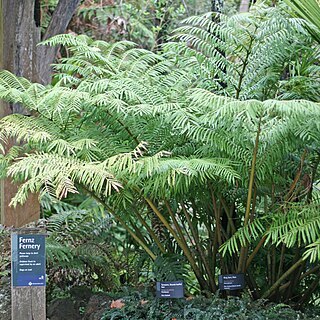Terrestrial large ferns. Rhizome short and erect, obscured by massive persistent leaf bases (stipules) forming a 'rootstock' to 50 cm high. Fronds clustered, 2–4-pinnate, to 4 m long. Veins free, generally simple or once-forked at base. Sori along lateral veins, superficial, median to submarginal, exindusiate but often with a conspicuous mass of receptacular uniseriate multicellular branched hairs, united in an elongate bivalved synangium; each valve comprising several compartments. Spores ellipsoidal and monolete; exospore ornamentation granular to spiny. (Camus 1998: 111–112). [The above description is for the genus Marattia from the Flora of Australia Volume 48 Marattiaceae treatment (Camus 1998). It includes the more recent genus Ptisana which includes the Australian species formerly placed in Marattia-Editor, 2 May 2022.] For detailed Ptisana genus description see Murdock (2008b: 744–745), also Ptisana in nzflora (accessed May 2022).

